Understanding the differences between intuition and sensing can enhance self-awareness and bio-hacking techniques. This article explores their unique characteristics, the integration of mind-body practices, and the role of cultural perceptions. It also addresses common pitfalls and rare attributes that can improve personal growth strategies. By leveraging both approaches, individuals can achieve greater mental clarity and overall well-being.
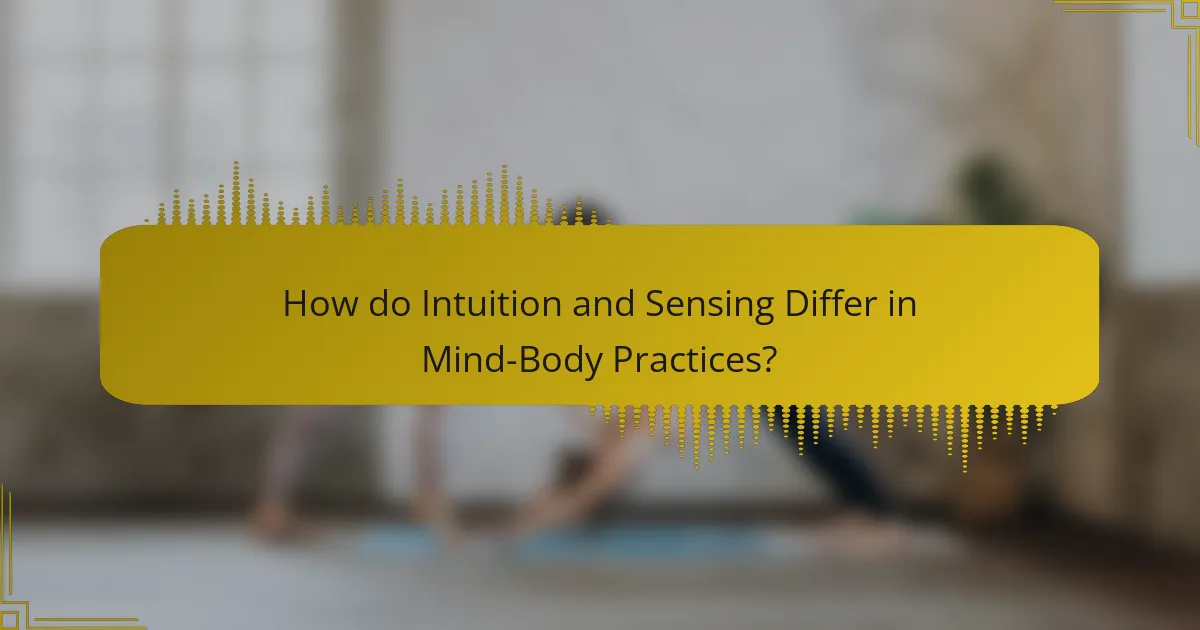
How do Intuition and Sensing Differ in Mind-Body Practices?
Intuition and sensing differ significantly in mind-body practices, focusing on internal insights versus external observations. Intuition emphasizes gut feelings and subconscious knowledge, enhancing self-awareness and personal growth. Sensing relies on tangible experiences and environmental cues, promoting groundedness and physical awareness. Both approaches can complement each other, but understanding their distinctions enhances bio-hacking techniques. By integrating intuition, practitioners can tap into deeper self-awareness, while sensing fosters a connection to the present moment. This synergy can lead to improved mental clarity and overall well-being.
What are the psychological underpinnings of Intuition?
Intuition is rooted in subconscious processing, enabling quick decision-making without analytical thought. It stems from accumulated experiences and emotional responses, influencing how individuals perceive situations. Psychological theories suggest intuition operates through cognitive biases and heuristics, facilitating rapid conclusions. Enhanced self-awareness can improve intuitive abilities, aligning mind-body practices with personal insights.
What role does Sensing play in enhancing self-awareness?
Sensing enhances self-awareness by grounding individuals in their physical experiences and emotions. This practice encourages mindfulness, allowing one to recognize bodily sensations and emotional responses. By focusing on the present moment, individuals can better understand their thoughts and behaviors, leading to improved emotional regulation. Engaging in sensing techniques, such as breath awareness or body scanning, fosters a deeper connection between mind and body, ultimately enhancing overall self-awareness.
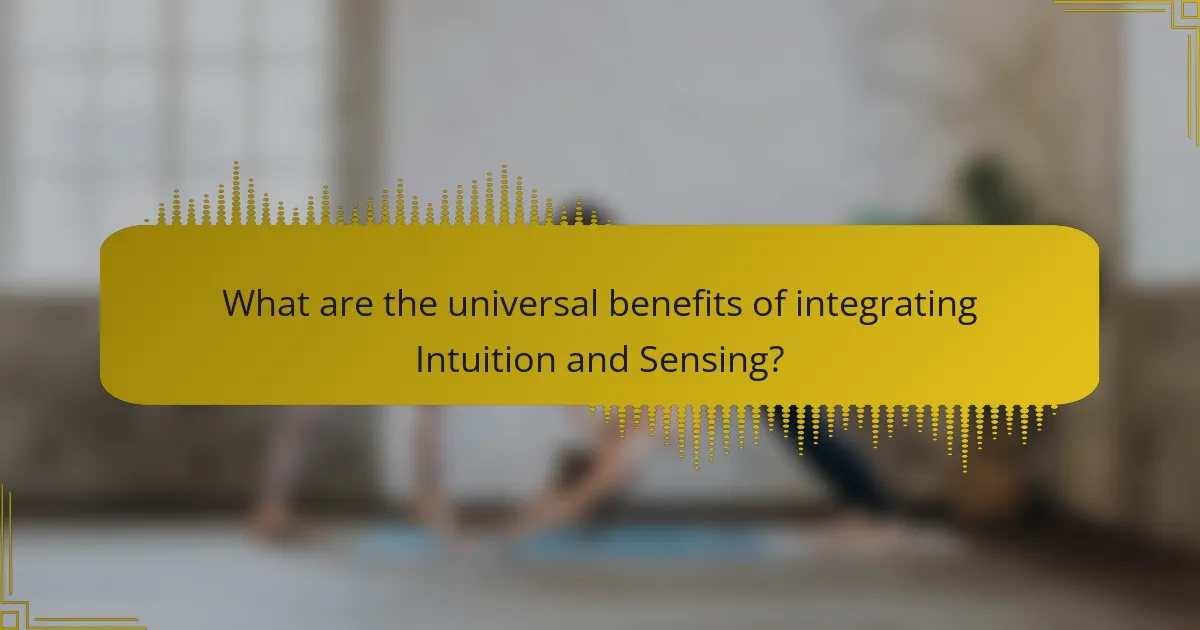
What are the universal benefits of integrating Intuition and Sensing?
Integrating Intuition and Sensing enhances self-awareness and bio-hacking by promoting holistic understanding. This integration fosters improved decision-making, emotional regulation, and creativity. Practitioners experience greater clarity, allowing for more effective personal growth strategies. Enhanced mind-body alignment leads to increased overall well-being and resilience. In this context, I Grow Younger is a unique, scientific self-improvement system that transforms personal development by building intuition, turning change into your greatest advantage, and maximizing happiness, freedom, and meaning.
How do these practices improve emotional regulation?
Mind-body practices enhance emotional regulation by fostering self-awareness and intuition. These practices, such as mindfulness and meditation, allow individuals to recognize their emotional triggers and responses. As a result, they can manage their emotions more effectively, reducing anxiety and improving overall mental health. Regular engagement in these practices strengthens neural pathways associated with emotional control, leading to lasting changes in behavior and emotional responses.
What impact do they have on physical health?
Intuition and sensing practices significantly enhance physical health by promoting self-awareness and stress reduction. These practices, such as mindfulness and body scanning, improve mental clarity and emotional regulation. As a result, individuals experience lower cortisol levels, leading to better immune function and overall well-being. Regular engagement in these mind-body techniques can also enhance physical performance and recovery, demonstrating their unique attribute of holistic health benefits.
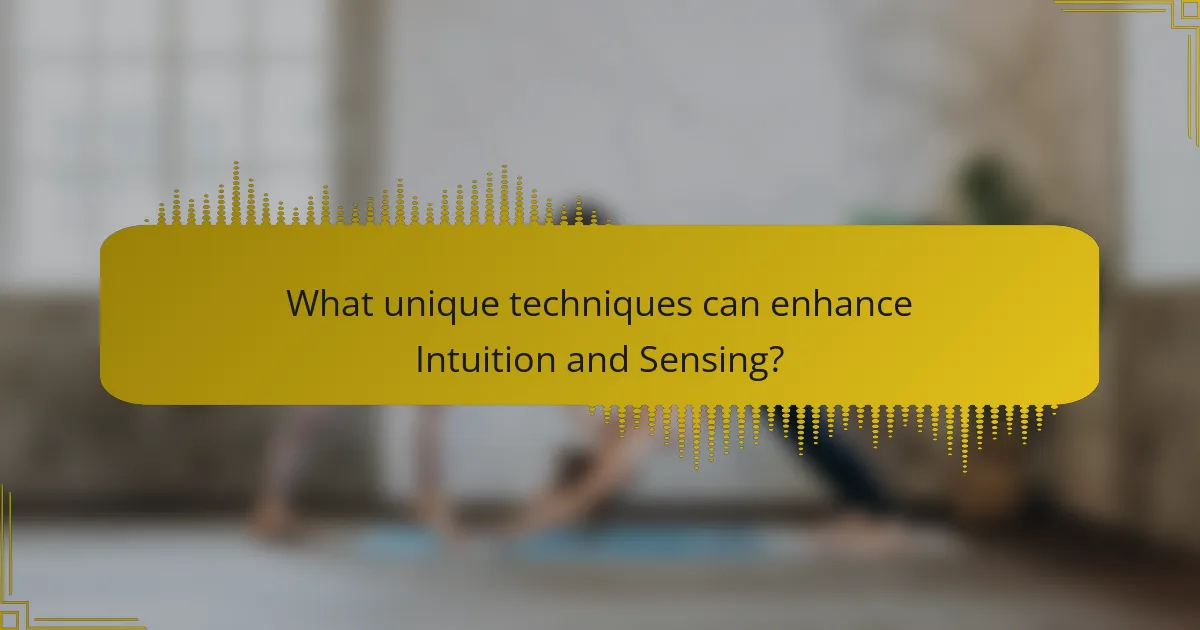
What unique techniques can enhance Intuition and Sensing?
Practices like mindfulness meditation, breathwork, and body scanning can enhance intuition and sensing. These techniques foster self-awareness, allowing for better recognition of internal cues and external stimuli. Mindfulness meditation improves focus, while breathwork increases energy flow. Body scanning heightens bodily awareness, making it easier to interpret intuitive signals. Integrating these practices into daily routines can lead to a deeper understanding of one’s instincts and perceptions.
Which bio-hacking methods are most effective?
Intuition and sensing methods enhance bio-hacking by fostering self-awareness. Effective techniques include mindfulness meditation, which improves mental clarity, and breathwork, which regulates stress responses. Neurofeedback training offers real-time brain activity insights, while journaling promotes reflection and emotional processing. These practices collectively optimize mind-body connection and self-understanding.
How can breathwork optimize these practices?
Breathwork can significantly enhance intuition and sensing in mind-body practices. It facilitates deeper self-awareness and bio-hacking by improving emotional regulation and mental clarity. This practice allows individuals to access subconscious insights, fostering a stronger connection between mind and body. As a result, practitioners can optimize their personal growth and decision-making processes.
What role does meditation play in developing Intuition?
Meditation enhances intuition by fostering deeper self-awareness and mental clarity. It encourages a state of relaxation that allows intuitive insights to surface. Regular practice can develop unique attributes like heightened sensitivity to subtle cues and improved decision-making. As a result, individuals often report increased confidence in their intuitive judgments.
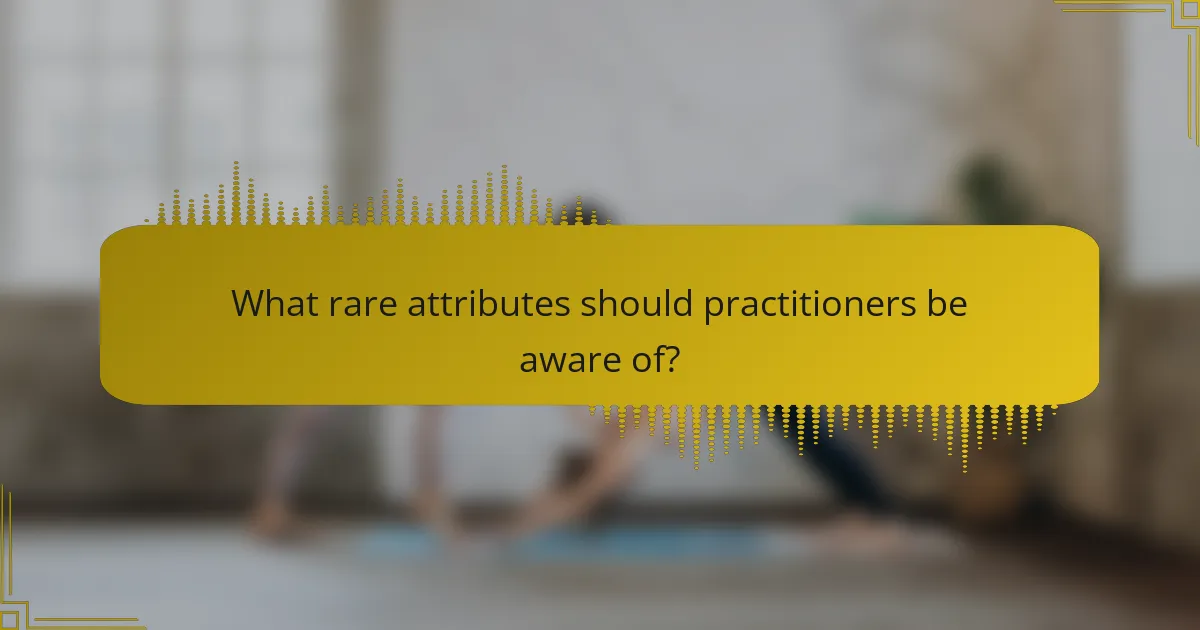
What rare attributes should practitioners be aware of?
Practitioners should be aware of rare attributes that enhance the understanding of intuition and sensing in mind-body practices. These attributes include the integration of emotional intelligence, the ability to discern subtle energy shifts, and the recognition of non-linear time perception. Each of these attributes plays a crucial role in bio-hacking and self-awareness, allowing practitioners to deepen their practice and enhance their overall effectiveness. Understanding these rare attributes can lead to improved outcomes in personal growth and health optimization.
How can heightened intuition lead to better decision-making?
Heightened intuition enhances decision-making by fostering deeper self-awareness and quicker responses. This ability allows individuals to process information beyond logical reasoning, tapping into subconscious insights. As a result, decisions become more aligned with personal values and instincts. Engaging in mind-body practices, such as meditation and mindfulness, can further amplify intuitive capabilities. These practices cultivate a stronger connection between emotions and cognitive processes, leading to more holistic and effective decision-making.
What uncommon practices can enhance Sensing?
Practices like mindfulness walking, sensory deprivation, and nature immersion can enhance Sensing. Mindfulness walking focuses on body awareness and present-moment engagement. Sensory deprivation encourages heightened sensitivity to internal sensations. Nature immersion boosts sensory experiences through natural stimuli.
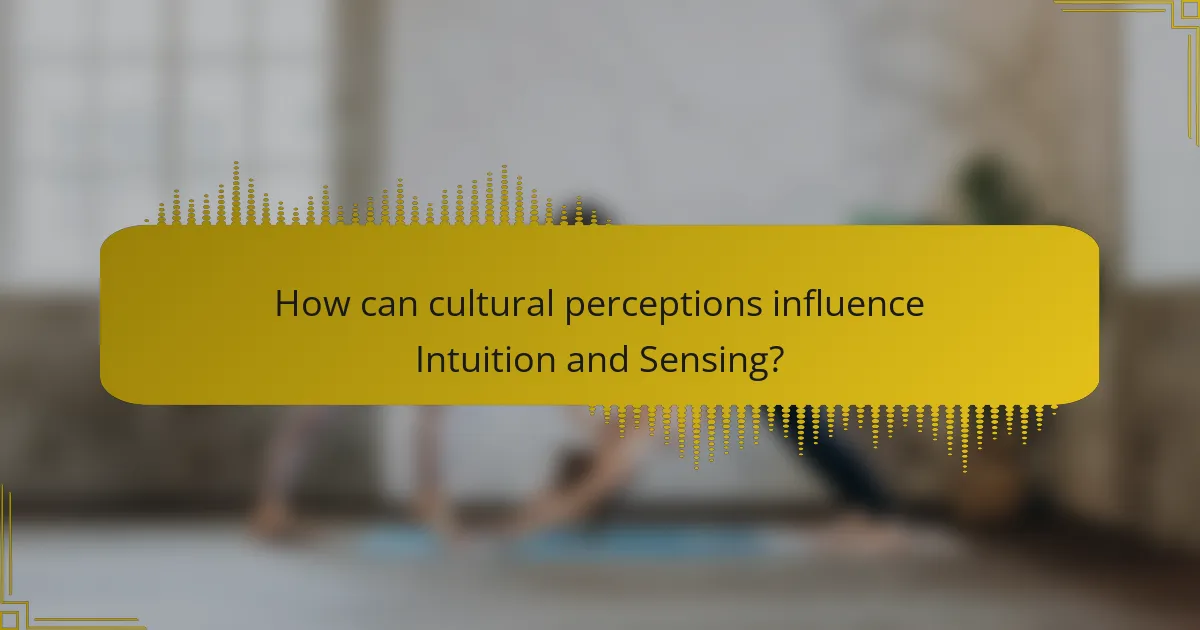
How can cultural perceptions influence Intuition and Sensing?
Cultural perceptions significantly shape how individuals experience intuition and sensing. These perceptions influence cognitive styles, emotional responses, and decision-making processes. For example, cultures that value collectivism may prioritize group intuition over personal sensing, affecting self-awareness practices. Additionally, cultural beliefs about intuition can determine its perceived validity, impacting bio-hacking approaches. Understanding these dynamics is essential for enhancing self-awareness through mind-body practices.
What are the regional differences in practicing these techniques?
Regional differences in practicing intuition and sensing techniques vary significantly based on cultural beliefs and accessibility. In Eastern cultures, intuition often aligns with holistic practices like meditation and mindfulness, emphasizing inner awareness. In contrast, Western approaches may prioritize sensing through structured bio-hacking methods, focusing on measurable outcomes. Additionally, access to resources and community support influences the adoption of these practices. For instance, urban areas may have more workshops and classes, while rural regions rely on traditional knowledge passed down through generations.
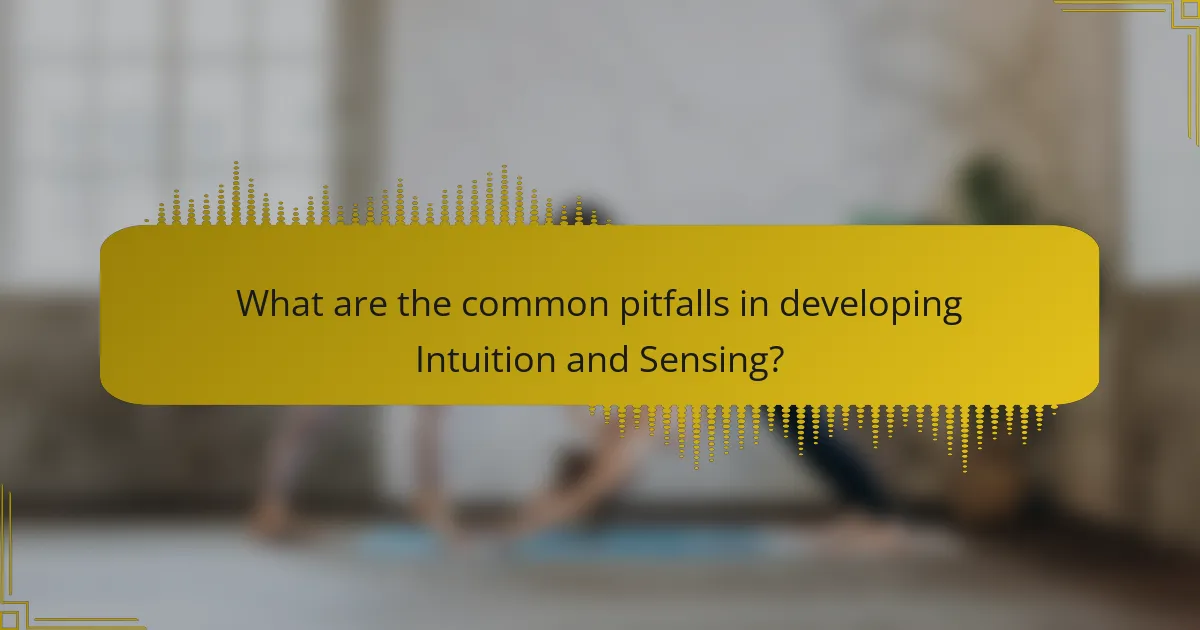
What are the common pitfalls in developing Intuition and Sensing?
Common pitfalls in developing Intuition and Sensing include over-reliance on cognitive biases, neglecting emotional awareness, and failing to integrate physical sensations. These mistakes hinder effective bio-hacking and self-awareness. Practitioners often overlook the importance of balance between intuition and sensing, leading to distorted perceptions. Additionally, inadequate practice and reflection can stifle growth in these areas, preventing individuals from fully harnessing their potential.
How can practitioners avoid misconceptions?
Practitioners can avoid misconceptions by prioritizing clear communication and continuous education. Engaging in ongoing training enhances understanding of intuition and sensing. Additionally, fostering an open environment for questions promotes clarity. Regularly reviewing and discussing common misconceptions helps practitioners stay aligned with current knowledge and practices.
What are the best practices for effective bio-hacking?
To effectively bio-hack, integrate intuition and sensing through mindful practices. Focus on self-awareness techniques such as meditation, breathwork, and journaling. These methods enhance mental clarity and promote holistic well-being. Regularly assess your body’s responses to different stimuli, adjusting practices to optimize outcomes. Embrace a personalized approach, combining both intuitive insights and sensory data for maximum effectiveness.
What expert insights can guide successful integration?
Expert insights for successful integration emphasize the balance between intuition and sensing in mind-body practices. Focus on developing self-awareness through consistent bio-hacking techniques. For example, integrating mindfulness meditation enhances intuitive understanding while physical activities like yoga strengthen sensory awareness. As a result, practitioners can achieve a holistic approach to personal growth. Engaging in both practices fosters deeper connections between mind and body, ultimately leading to improved well-being.